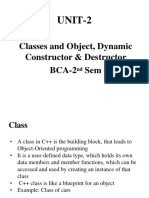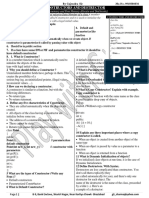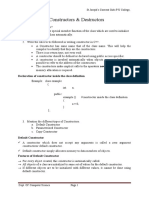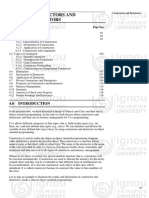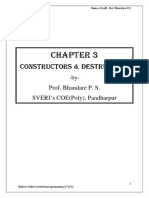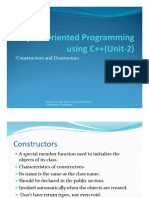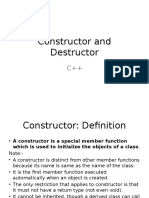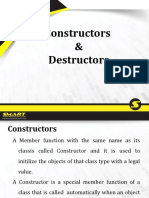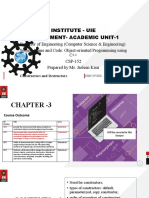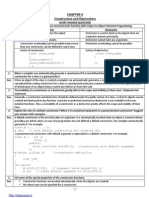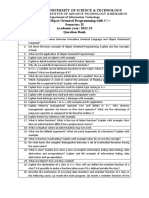0% found this document useful (0 votes)
48 views42 pagesCE144 OOPC Unit-06
The document discusses different types of constructors in C++ including default, parameterized, copy, and multiple constructors. It also covers constructor overloading, shallow vs deep copy, and constructors with default arguments.
Uploaded by
Priyanshu PurohitCopyright
© © All Rights Reserved
We take content rights seriously. If you suspect this is your content, claim it here.
Available Formats
Download as PDF, TXT or read online on Scribd
0% found this document useful (0 votes)
48 views42 pagesCE144 OOPC Unit-06
The document discusses different types of constructors in C++ including default, parameterized, copy, and multiple constructors. It also covers constructor overloading, shallow vs deep copy, and constructors with default arguments.
Uploaded by
Priyanshu PurohitCopyright
© © All Rights Reserved
We take content rights seriously. If you suspect this is your content, claim it here.
Available Formats
Download as PDF, TXT or read online on Scribd
/ 42






